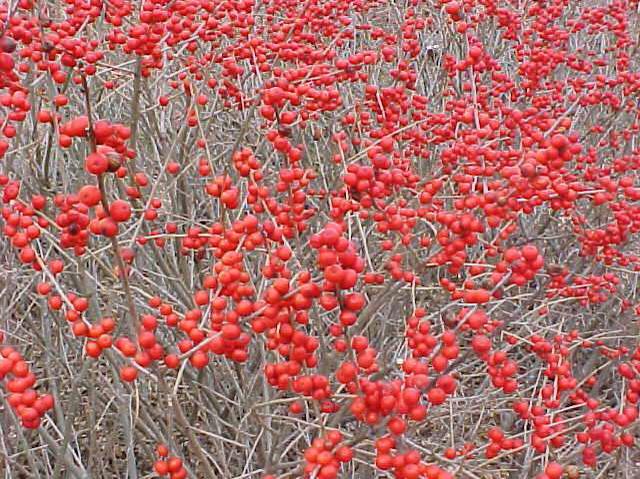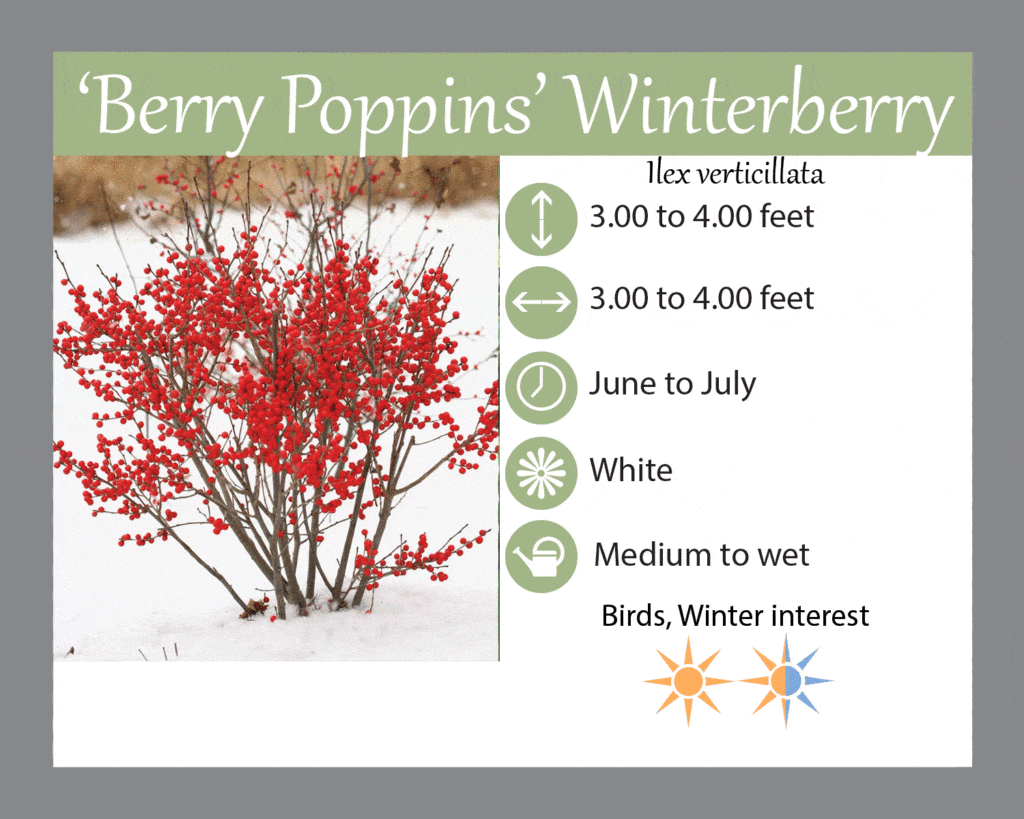Native Plants of Maryland for Winter Interest
‘Berry Poppins’ Winterberry
‘Berry Poppins’ Winterberry is a great native plant for winter interest in Maryland. It is a deciduous shrub that is low-growing with dark green toothed leaves. Winterberry is a dioecious species, meaning plants are either male or female and require at least one of each to flower and fruit. One male can pollinate 6-10 female shrubs. Inconspicuous flowers appear in late spring, but the noteworthy characteristic is the bright red berries that appear in late summer and persist through winter. This makes it not only a beautiful specimen for winter interest, but also a great choice for sustaining wildlife. A good compatible male plant is ‘Mr. Poppins.’
LGS Notes:
I love winterberry because of the winter interest aspect. This shrub offers something bright and beautiful in a time of year when there is not a lot going on in the gardens. I really enjoy ice and snow on winterberries for a beautiful winter display.-Lauren
This dwarf cultivar is a great option for residential lots and smaller garden spaces where a mass planting of larger winterberries is not possible. It reliably sets heavy fruit when paired with a ‘Mr. Poppins’ (male) Winterberry, and the cut stems are lovely in wreaths or winter plant arrangements. -Jessica
The vivid red berries on Ilex verticillata are such a welcome pop of color in the late fall and winter garden. I also love to use small cultivars like ‘Berry Poppins’ in seasonal container plantings, where the berries and open, architectural branches really shine. Wherever you plant them, you can cut a few branches to enjoy inside and then leave the rest for the birds! – Amy


